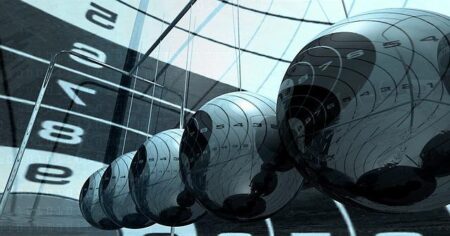Chablis: A Journey Through Tradition and Innovation in Winemaking
Located in the enchanting Burgundy region of France, Chablis is celebrated not only for its stunning landscapes but also for the delicate equilibrium that winemakers must maintain to craft their esteemed Chardonnay. Surrounded by rolling hills and enriched limestone soil,these artisans work diligently under nature’s unpredictable whims,confronting numerous challenges that could jeopardize their craft. From erratic weather conditions to persistent pest threats, Chablis producers navigate a precarious path where every choice can substantially influence the quality and essence of their wines. This article delves into the intricate interplay between tradition and modernity that characterizes winemaking in Chablis, highlighting those who embrace risk in pursuit of perfection.
Modern Techniques in Chablis Winemaking: Enhancing Terroir
In the charming landscape of Chablis, winemakers are redefining traditional practices by integrating modern techniques aimed at showcasing the unique terroir of their vineyards. This approach is vital in a region distinguished by its Kimmeridgian clay soils,which impart specific mineral characteristics to the wine. One notable method gaining traction is native yeast fermentation, which fosters a more genuine expression of grapes while enriching complexity within the final product. Additionally,some vintners are experimenting with oak aging using ultra-low toast barrels,allowing for nuanced flavors without overshadowing the wine’s natural traits.
The evolution of vineyard management has also been pivotal in emphasizing terroir attributes. Techniques like precision viticulture,utilizing advanced technology to assess vine health and optimize grape ripeness,are becoming commonplace. The practice of cover cropping has further improved soil vitality; carefully chosen cover plants enhance biodiversity while minimizing erosion risks.These efforts not only reflect Chablis winemakers’ commitment to enduring practices but also illustrate an increasing awareness regarding how their decisions shape each wine’s final expression—striking a balance between innovation and tradition.
Climate Adaptations: Ensuring Quality Amidst Challenges
The picturesque region of Chablis faces an escalating array of climate-related challenges threatening its renowned wines’ integrity. Rising temperatures coupled with unpredictable weather patterns complicate maintaining essential conditions for high-quality Chardonnay cultivation. To address these issues effectively while respecting traditional methods defining Chablis wines, producers have adopted several innovative strategies:
- Diligent vineyard management: Viticulturists meticulously monitor soil health and vine performance to create optimal grape-growing environments.
- Timely harvests: Some vintners have opted for earlier grape harvesting to prevent over-ripening while preserving acidity and freshness.
- Diverse varietals experimentation: A few producers are trialing lesser-known grape varieties believed to be more resilient against changing climatic conditions.
cultural practices within vineyards are evolving as well; many winemakers explore sustainable methods that lessen reliance on chemical inputs through organic farming techniques and regenerative agriculture principles—protecting both land integrity and long-term vineyard health.Furthermore, technology such as precision viticulture tools aids them in refining irrigation strategies alongside pest control measures effectively.
The table below summarizes some adaptive strategies being implemented:
| Adaptive Strategy | Description |
|---|---|
| Sustainable Practices | A focus on biodiversity enhancement while reducing chemical usage. |
| tactical Harvesting Timing | Selectively picking grapes earlier ensures retained acidity levels. |
| Diverse Grape Varieties Exploration | Aiming at introducing new species suited for warmer climates. |
| Data-driven tools utilized for optimizing overall vineyard health. |
Discovering Flavors Unique to Chablis: An Overview of Signature Wines
The charm surrounding Chablis extends beyond its breathtaking vineyards; it encompasses extraordinary wines reflecting this region’s distinctive terroir as well! Nestled within northeastern Burgundy lies this area characterized primarily by kimmeridgian limestone soils yielding white wines predominantly crafted from Chardonnay grapes exhibiting remarkable minerality traits influenced heavily by local climate factors—cool temperatures combined with frost risks contribute refreshing acidity alongside vibrant elegance found throughout these offerings.
Typical tasting notes often include:
- Citrus Fruits – Lemon & Lime Notes
- Crisp Green Applewith Refreshingly Bright Undertones
- Mineral Hints – Wet Stone or FlintNotes
- < b >Floral Accents – Subtle White Flower Hints
Each vineyard narrates its own tale leading towards diverse styles ranging from Petit-Chablais up until Grand-Cru classifications! The classification system emphasizes quality along with unique characteristics derived from various climat sites—the most prestigious Grand Cru locations such as Les Clos & Vaudésir provide complex age-worthy expressions whereas Petit-Chablais offers accessible youthful profiles typically enjoyed shortly after bottling.
Here’s an overview summarizing classifications:
Classification Characteristics Flavor Profile tr/>
td =”” younger vines less clay
td =”” Light crisp fruity
< h3 id ="conclusion ">Conclusion: Key Insights into Winemaking Resilience< / h3 >
In summary ,the beautiful landscape encompassingChab lis servesas ahubforwinemak erswhoarebothartisansandrisk-takers .Navigatingthefragilebalancebetweeninnovationandtraditionin pursuitofexquisitewines ,theseproducersadapttoever-changingclimatechallengeswhileensuringthatdistinctcharacteristicsremainintact .theirresilienceandcreativityreflecttheessenceofthisregionwhereeachwine bottletellsastoryofstruggleandvictory .AsChabli scontinuesitsevolution ,one thing remainscertain :thepassionforwinemak inghere transcendsvineyards resonatingthrough every sipofthecele bratedwines produced .Whileuncertainty loomsoveritsfuture ,dedicationtowardsqualityandheritagewillundoubtedly endure .



